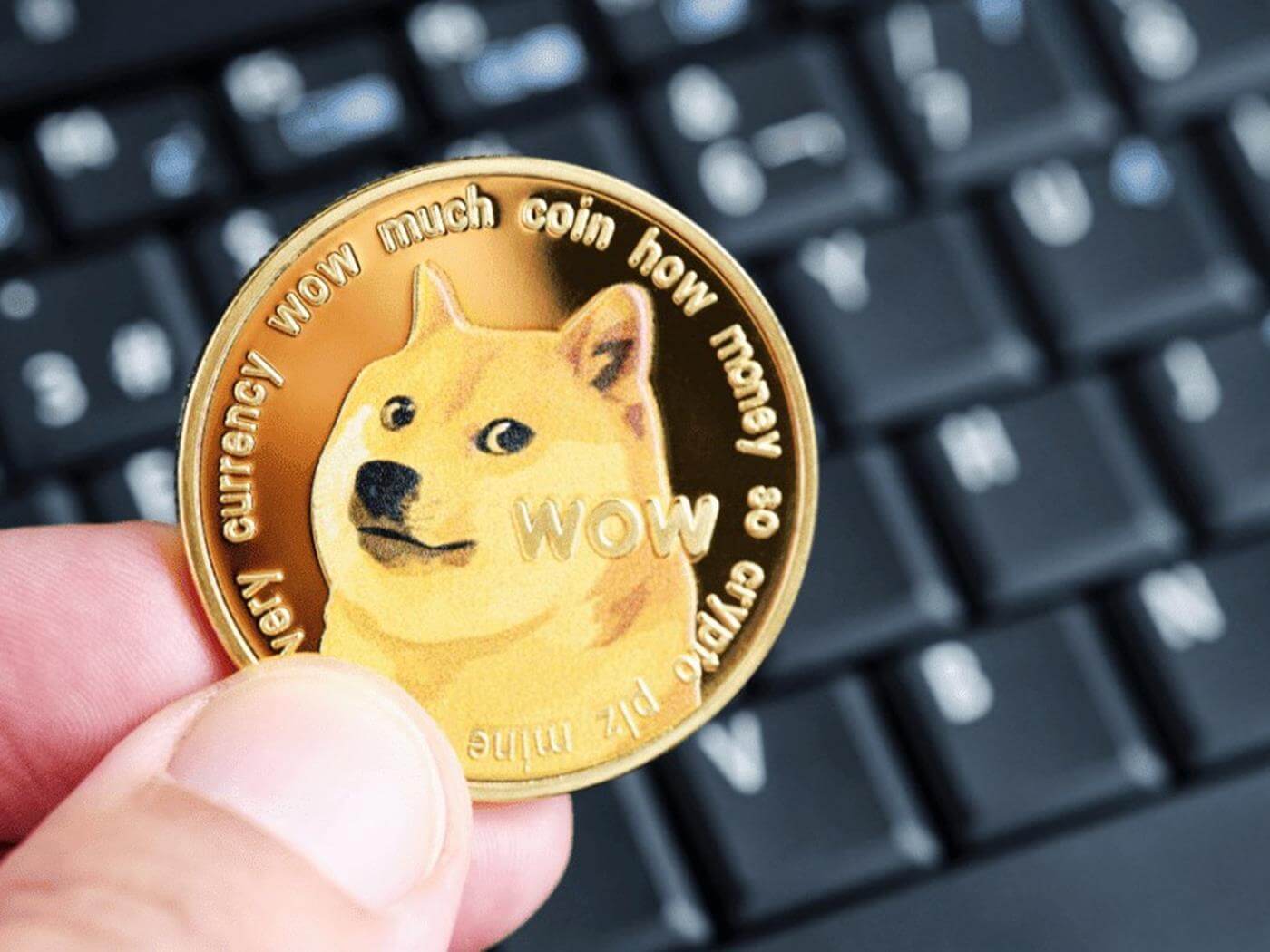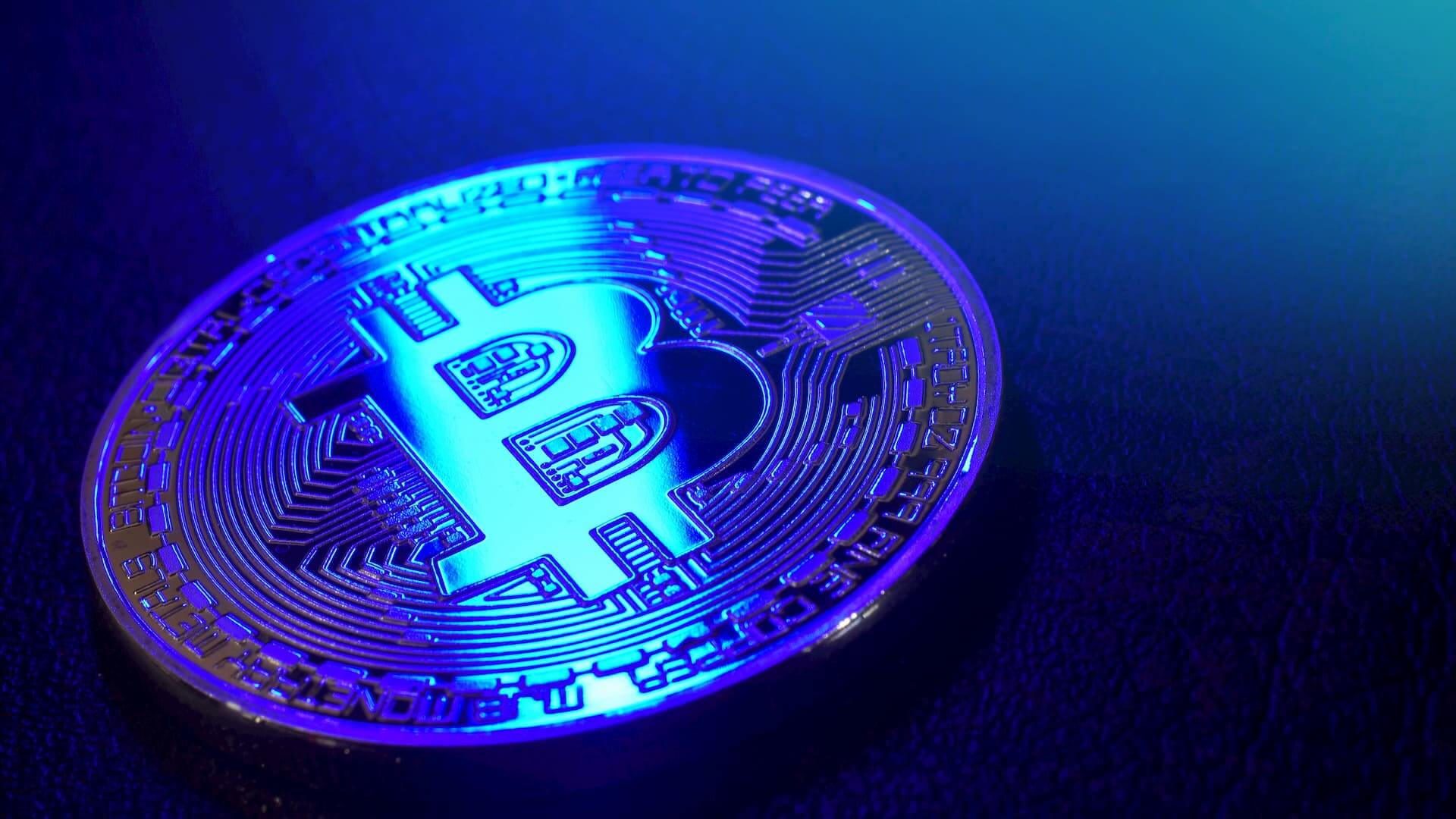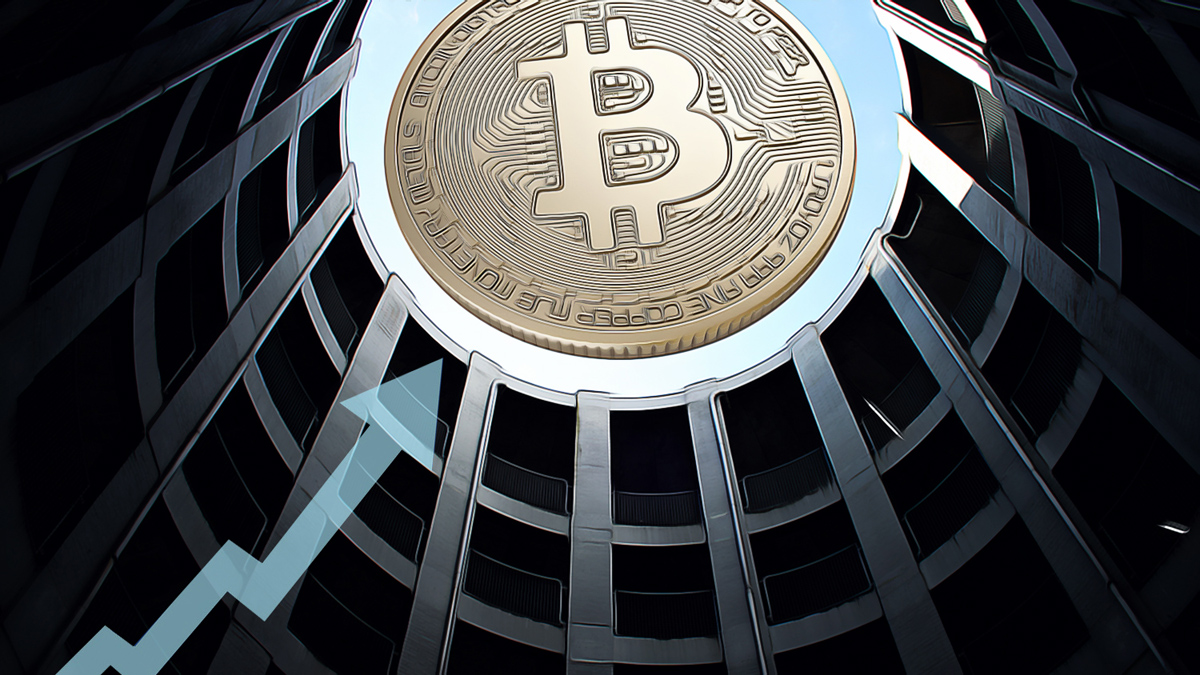Dogecoin (DOGE) experienced a significant increase in daily trading, surpassing Bitcoin (BTC) and Litecoin (LTC). Mishaboar, a prominent member of the Dogecoin community, announced the news on May 5th.
Taking What’s Been Done in the Past Forward
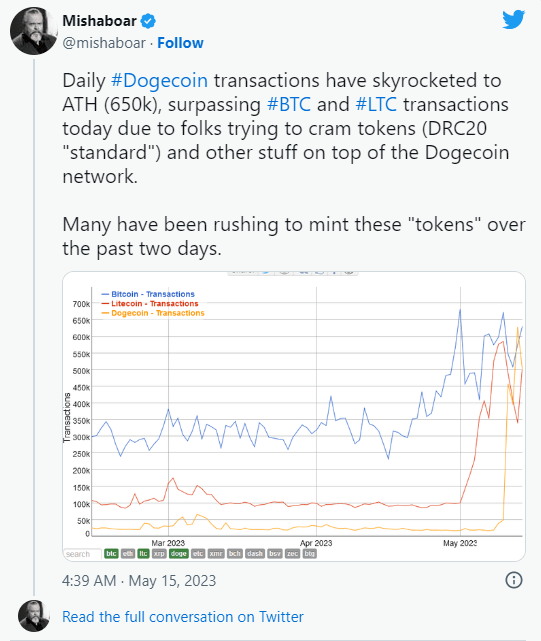
As mentioned in the tweet above, the introduction and adoption of the DRC-20 token standard triggered this increase. Recently, Bitcoin has experienced a massive increase in network activity thanks to excellent market participation with BRC-20 tokens.
Litecoin followed a similar path, creating a more accessible copy of Bitcoin and introducing its own LTC-20 standard. So it seems to be a repetition of Dogecoin’s creation of a joke-quality Bitcoin imitation, this time in terms of its experimental fungible token standard.
Interestingly, its creators have dedicated a Twitter page, Doge Labs, to DRC-20, which aims to inform other members of the community about the goal. Dubbed “Doginals” and inspired by BRC-20, Doge Labs stated that it solves the challenges that DRC-20 has been experiencing.
One compliance challenge occurs when individual transactions are stocked between different blocks or between transactions within a single block. In addition, DRC-20 involves the process of assigning unique IDs, including NFTs, to Shibes, Dogecoin’s smallest unit, from the first block. However, Santiment’s data showed that this development did not necessarily affect the volume of NFT sales on the Dogecoin blockchain.
Although there have been spikes since May 10, the volume had dropped to 831,000. This suggests that interest in trading Dogecoin-related non-fungible assets is waning.
Trading Volume Increased, Difficulties Started
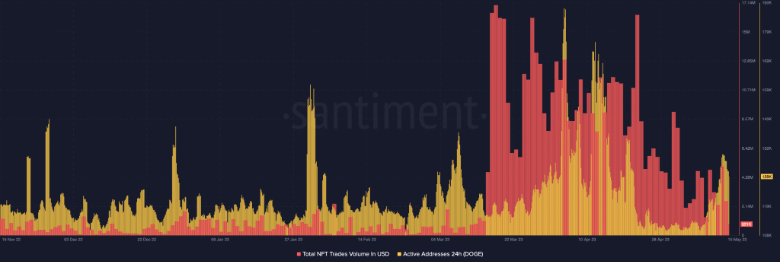
In contrast to NFT volume, active addresses had a cautious reaction to the DRC-20 innovation. Active addresses indicate the number of wallets participating in sending and receiving assets on a project’s network. As shown above, the 24-hour active address count increased to 129,000. This increase indicates an impressive level of engagement from Dogecoin’s already existing addresses.
However, the recent rush to create tokens on the network may have created problems for Dogecoin. According to Dogecoin developer Patrick Lodder, the network has experienced blockage issues. Congestion occurs when a transaction capacity is used up within a block, making it difficult for other transactions to be processed. According to Dogecoin’s block analysis platform Blockshibe, the used transaction capacity increased by 11.43%.
While Dogecoin has surpassed Bitcoin and Litecoin in network activity thanks to DRC-20, its increased presence is no guarantee of long-term viability. Nor does it indicate that the Dogecoin ecosystem will become more established than Bitcoin.
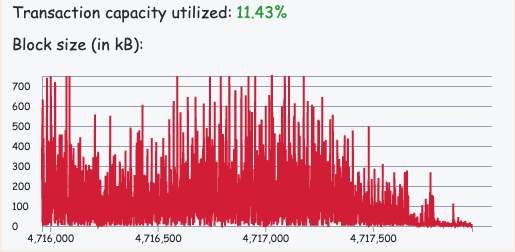

 Türkçe
Türkçe Español
Español

